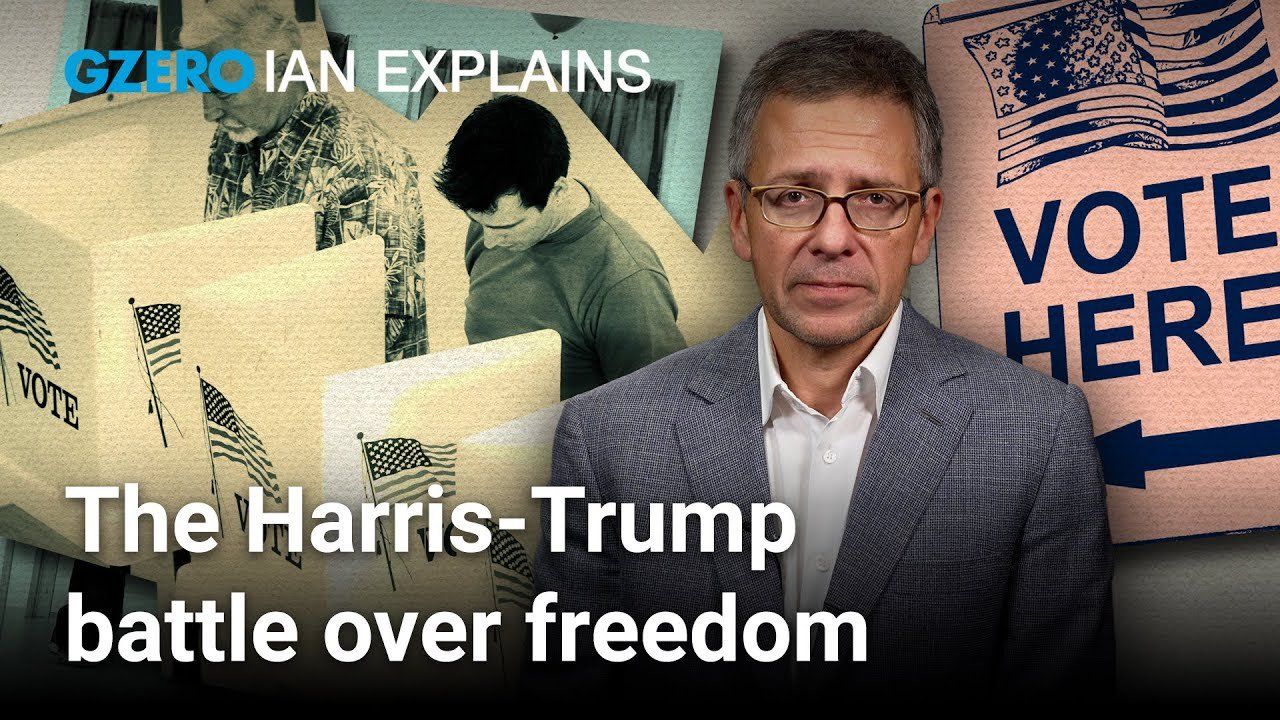October 12, 2024
Americans love their freedom. And depriving other Americans of said freedom (see: slavery, manifest destiny). But lately it's been the Democratic candidate for president, Vice President Kamala Harris, who has been focusing on freedom.
At a recent rally, she said this: "Across our nation, we have been witnessing a full-on assault on hard-won hard-fought freedoms and fundamental rights. The freedom to vote, the freedom to be safe from gun violence, the freedom to love who you love openly and with pride, and the freedom of a woman to make decisions about her own body and not have her government tell her what to do."
In the past, Democrats have talked about how the government could protect the freedom to love or the freedom to unionize. Flash forward to 2024, Reagan would be proud. What explains this rhetorical jujitsu? Well, it makes for a handy political foil. Trump could become that threat that Americans need protecting from.
There is, of course, one little problem with this messaging: reality. Because, in reality, Harris fundamentally believes that policy can make people's lives better. Sure, she received some criticism in her debate against Trump for being light on policy, and her campaign waited until well into September to publish an “Issues” page on her website. But make no mistake, Kamala Harris wants to use the levers of big government to build more housing, pass new child tax credits, and modernize education.
So, the question for Kamala—and Donald—is whether enough voters can live with those contradictions. We'll find out when millions of them exercise their most fundamental freedom at the ballot box on November 5th.
GZERO World with Ian Bremmer, the award-winning weekly global affairs series, airs nationwide on US public television stations (check local listings).
New digital episodes of GZERO World are released every Monday on YouTube. Don't miss an episode: subscribe to GZERO's YouTube channel and turn on notifications (🔔).
From Your Site Articles
- Harris, Trump and the hypocrisy in US politics ›
- Will Kamala Harris’ momentum last in the race against Trump? ›
- Trump vs. Harris: A high-stakes election and its risks to democracy ›
- How Harris and Trump plan to tackle America’s housing crisis ›
- Muted mics, amplified impact: Harris and Trump debate for razor-thin margins ›
- Ian Bremmer on Trump’s win - GZERO Media ›
More For You
In this episode of Tools and Weapons, Microsoft Vice Chair and President Brad Smith sits down with Ed Policy, President and CEO of the Green Bay Packers, to discuss how purpose-driven leadership and innovation are shaping the future of one of the world’s most iconic sports franchises. Ed shares how technology and community-focused initiatives, from Titletown Tech to health and safety innovations on the field, are transforming not just the game of football, but the economy and culture of Green Bay itself. He explains how combining strategic vision with investment in local startups is keeping talent in the Midwest and creating opportunities that extend far beyond Lambeau Field.
Subscribe and find new episodes monthly, wherever you listen to podcasts.
Most Popular
Egyptians head to the polls to elect a new parliament during the first round of the Egyptian parliamentary elections in Giza, Egypt, on November 10, 2025.
Photo by Islam Safwat/NurPhoto
Egyptians are voting this month in parliamentary elections that aren’t expected to change who’s in charge, but could allow President Abdel Fattah el-Sisi to rule beyond 2030.
An injured soldier is transferred to a hospital following a clash between Thai and Cambodian troops over a disputed border area in Sisaket Province,Thailand, December 7, 2025.
Royal Thai Army/Handout via REUTERS
Thailand and Cambodia’s ceasefire is on the verge of collapse. Strikes were launched across their disputed border today, following clashes over the weekend that resulted in the death of a Thai soldier.
© 2025 GZERO Media. All Rights Reserved | A Eurasia Group media company.
